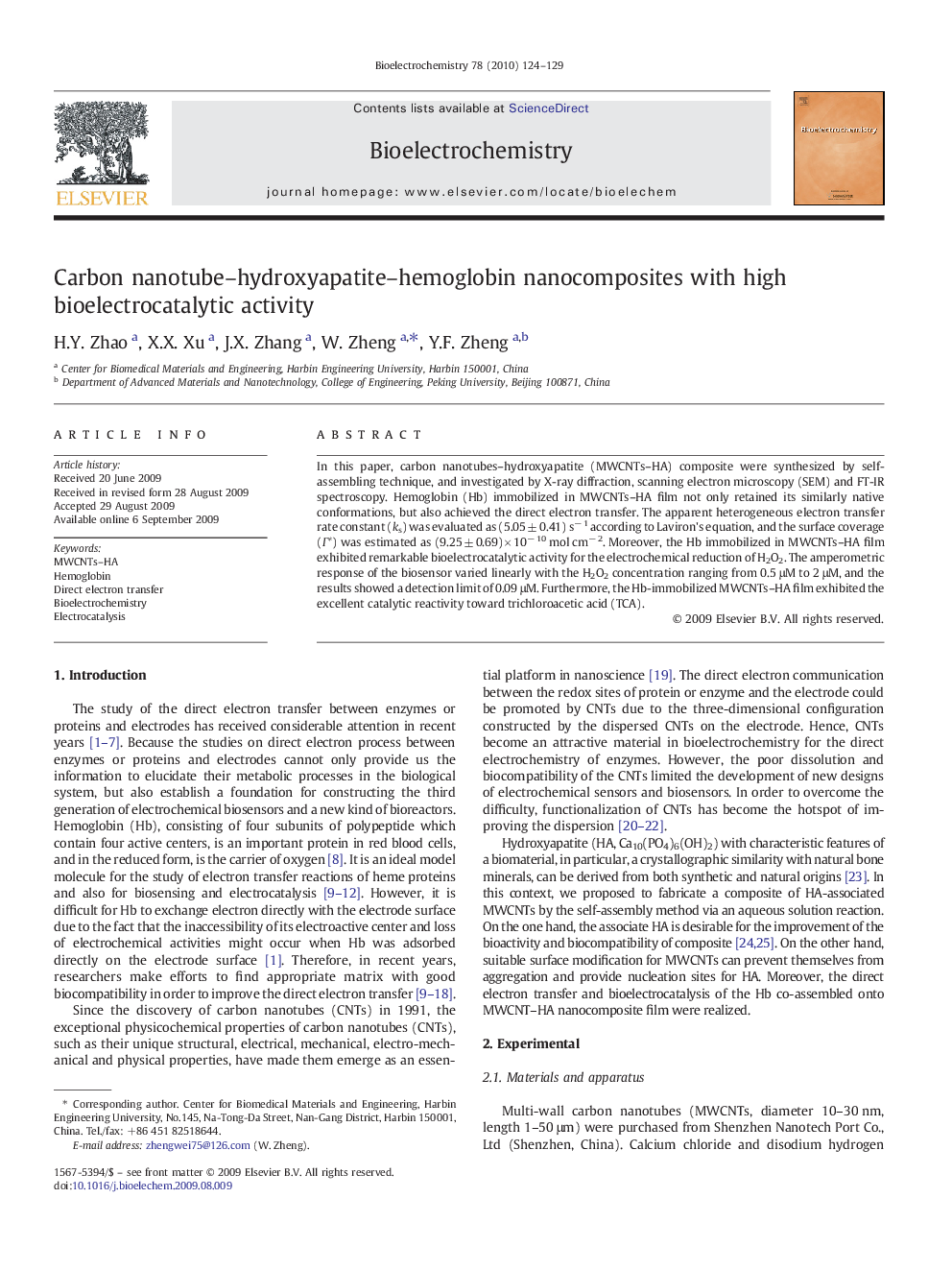| Article ID | Journal | Published Year | Pages | File Type |
|---|---|---|---|---|
| 1268735 | Bioelectrochemistry | 2010 | 6 Pages |
In this paper, carbon nanotubes–hydroxyapatite (MWCNTs–HA) composite were synthesized by self-assembling technique, and investigated by X-ray diffraction, scanning electron microscopy (SEM) and FT-IR spectroscopy. Hemoglobin (Hb) immobilized in MWCNTs–HA film not only retained its similarly native conformations, but also achieved the direct electron transfer. The apparent heterogeneous electron transfer rate constant (ks) was evaluated as (5.05 ± 0.41) s− 1 according to Laviron's equation, and the surface coverage (Γ*) was estimated as (9.25 ± 0.69) × 10− 10 mol cm− 2. Moreover, the Hb immobilized in MWCNTs–HA film exhibited remarkable bioelectrocatalytic activity for the electrochemical reduction of H2O2. The amperometric response of the biosensor varied linearly with the H2O2 concentration ranging from 0.5 μM to 2 μM, and the results showed a detection limit of 0.09 μM. Furthermore, the Hb-immobilized MWCNTs–HA film exhibited the excellent catalytic reactivity toward trichloroacetic acid (TCA).
